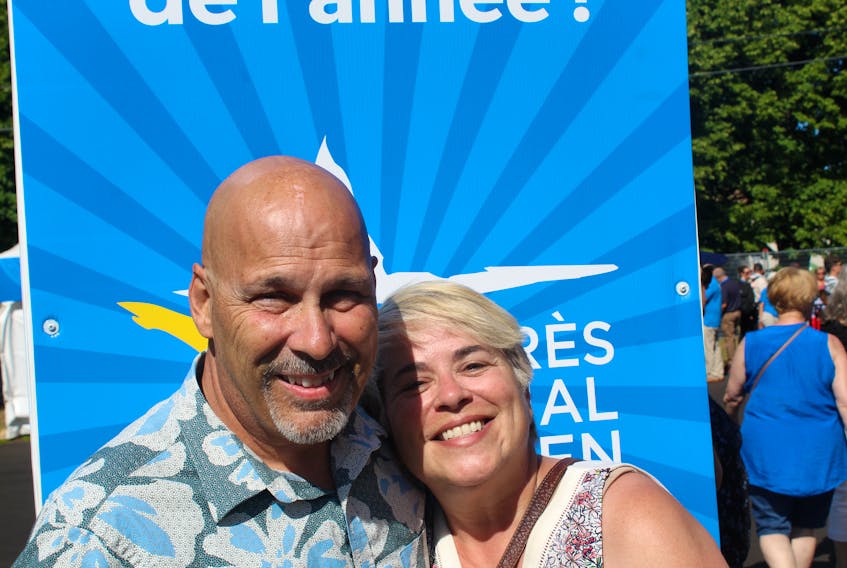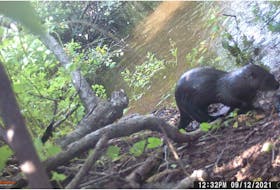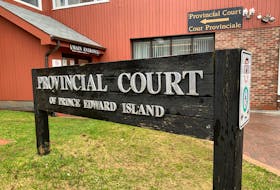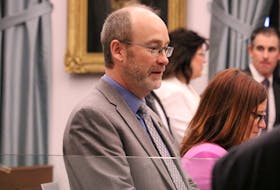MISCOUCHE, P.E.I. — French pride runs deep in the Maritimes, but the region isn't the only place with a proud Acadian heritage.
During the recent Acadian World Congress (CMA), Acadian descendants from as far away as Louisiana travelled to the Island to celebrate their heritage.
In the 1700s, the Acadian people were expelled from what was then Acadia, (much of Atlantic Canada today), by the English.
Many were deported back to France, others fled to different parts of the continent. Some, however, were shipped down to what is now Louisiana.
There they became known as Cajuns, a word played off Acadian.
The Cajun culture of Louisiana has seen many evolutions of its people over the years.
Residents of Lafayette, L.A., the Achees family – Philip, Alberta and their adult son Philip II – celebrated the CMA in Miscouche on Aug. 14.
The Achee family is the seventh generation of Michel Haché-Gallant, an Acadian settler of the 1700s who lived in the settlement that would be Charlottetown.
Haché-Gallant died before the Expulsion of the mid-1700s, but the Achees speculate their ancestors were deported to Louisiana along with so many other Acadian families.
“Our ancestors came into New Orleans and then settled into the little ‘villes’ along the Mississippi River,” said the elder Philip.
“We believe the (Haché) name was misspelled when they first settled, and the name was changed to (Achee),” added the son.
Acadians in Louisiana at the time started to create their own culture and formed into what are today’s Cajuns.
“A lot of people in Louisiana settled into the remote areas and stayed. They created little French communities along the (Mississippi) river, and in some small towns, they still speak French. The French culture is still alive in areas of Louisiana,” said Alberta.
One distinct aspect that sets the Cajun people apart from their Acadian relations is the unique cuisine.
“The food really changed. There was Caribbean folk mixed into Acadiana (the French settlements in Louisiana), so many different flavours and food created what we know as Cajun food of today,” said Philip II.
The French culture in the U.S. was lost for many years in his father’s generation, as their parents were denied expressing their heritage and the French language wasn’t allowed in schools.
“It’s probably why my daddy never taught me. When he first went to school, he only knew French. But the teacher didn’t allow the language spoken on school grounds. He had to learn English to go,” said the elder Philip.
But times have changed, said Philip II.
“In the 1930s and 40s, Cajun was an insult. It meant you were an illiterate low-life. But now, Cajun culture is celebrated. The Louisiana University in Lafayette’s mascot is the Ragin’ Cajun. Even people who aren’t Cajun want to be. We’re a people that love to party and have a good time.”
“The Cajun life has been revived, and is alive in Acadiana,” added Alberta.
The Achees weren’t the only Louisianans in Miscouche for the Congress.
Island residents Aubrey and Angie Cormier met 35 years ago at the Université de Moncton.
Angie is Cajun, from the Lafayette area in Louisiana. She came to Canada on a scholarship from the Council for the Development of French in Louisiana, an association responsible for the French preservation in Louisiana.
“My family name is Aucoin, and we are what you would consider the prairie Cajuns in Louisiana.”
Aubrey is an Acadian from Cap-Pelé, N.B.
Aubrey and Angie got married in the 1980s and moved to P.E.I., where they were approached by Clément Cormier, founder of Université de Moncton. He believed they were the first Cajun and Acadian couple to marry since the deportations.
“He was a historian, and he thought we could be the first. He wanted to meet us and discuss our heritages,” said Aubrey.
Unfortunately, Clément Cormier died two weeks after first speaking with Aubrey and Angie, but it’s possible the couple are the first union between the Francophone cultures.
“We can’t be sure, but we were married 35 years ago, and there was little communication between the Cajuns and the Acadians. It wasn’t like today, where we have ways to connect. Contact was rare,” Aubrey said.
Angie’s ancestry wasn’t always as clear to her as it is today.
“I knew we were different. My parents, grandparents spoke French. My great-grandparents didn’t know a word of English. But I was raised and educated in English. I knew there was a lot of French mixed into our vocabulary and everyday life, but I didn’t know why. It wasn’t until I moved to Canada and learned about the Expulsion.”
Aubrey and Angie have attended the CMA since it began in 1994, including the 1999 events in Louisiana.
“We had brought our then small children with us. When we’d go places like the grocery store and the older locals would hear our children speaking French, they would come up to us with tears in their eyes. They said they hadn’t heard a child speak in French for so long,” said Angie.
The Cormiers said that since the CMA in the southern state, there has been a resurgence of French culture.
“Many Acadians go down to Louisiana to teach French immersion, since the language was stamped out for decades,” said Aubrey.
“Everyone in Louisiana wants to be a Cajun now. Because it’s fun and we’re so rich with culture,” said Angie.









